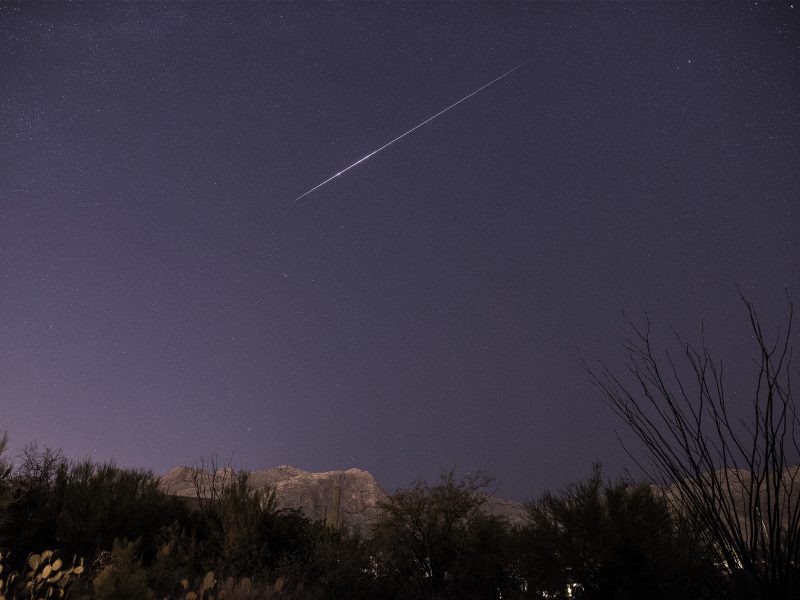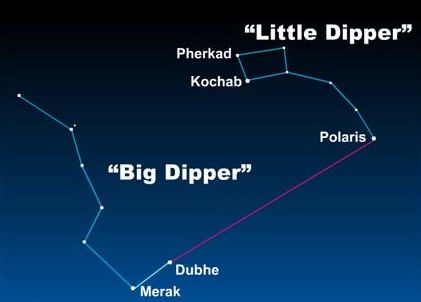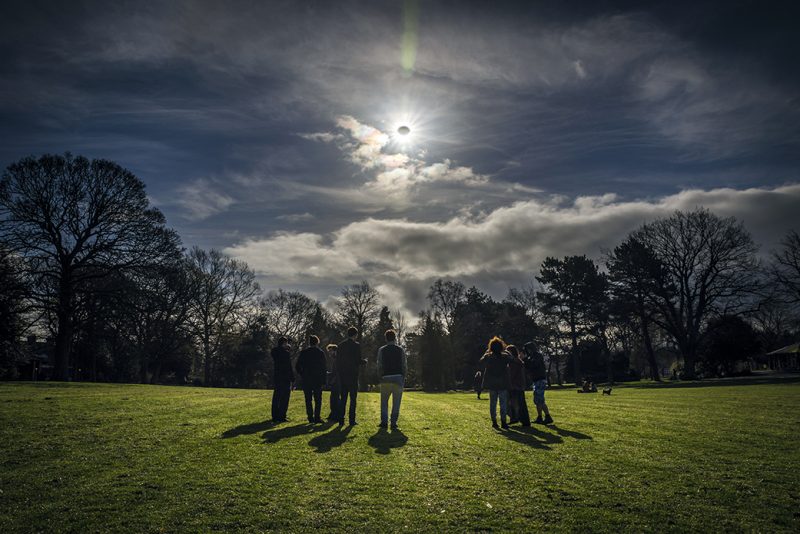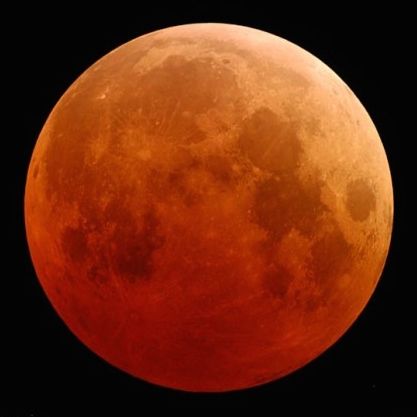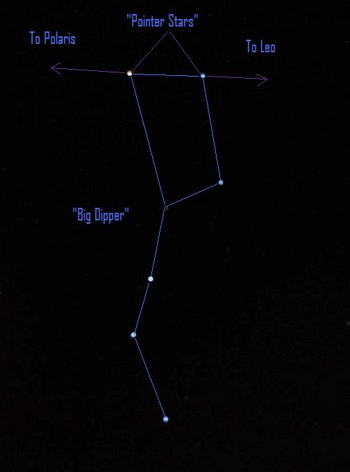

Southern sea otters resting and napping among kelp fronds in Morro Bay, about midway between San Francisco and Los Angeles. Image via Ingrid Taylar.
A new study by a team of university and government scientists – announced by California’s Sonoma State University on December 9, 2019 – has concluded that the southern sea otter population could be tripled if the otters were reintroduced by humans to the largest estuary in North America’s west coast, San Francisco Bay. The population of southern sea otters currently numbers only around 3,000, but their numbers were once much higher. The new study is promising, but there’s a stumbling block: the great white sharks that patrol the waters in San Francisco Bay, near iconic Golden Gate Bridge. Brent Hughes of Sonoma State University is the lead author of the new study. He said in a statement:
We call it ‘the gauntlet.’ Otters really can’t get past the gauntlet.
To repopulate the San Francisco Bay estuary, sea otters would have to be transported to that location, past the sharks, by conservationists.
Similar reintroduction efforts over the past few decades – relocating sea otters from areas with healthy populations to sites they once inhabited – have been key to their ongoing recovery. Hughes said:
It would essentially end up lifting the sea otter out of its endangered species status. For the conservation of the sea otter, this would be huge.
The findings were published in the December 2019 issue of the peer-reviewed journal PeerJ: the Journal of Life and Environmental Sciences.
EarthSky 2020 lunar calendars are available! They make great gifts. Order now. Going fast!

Brent Hughes is an assistant professor of biology at Sonoma State University. He led the research for a new study on the possibility of tripling the southern sea otter population by reintroducing them to the San Francisco Bay. Image via Jessica Saavedra.
Southern sea otters (Enhydra lutris nereis) are a subspecies of a larger population of sea otters (Enhydra lutris). The subspecies lives in California’s coastal waters, but – speaking in terms of the entire group of sea otters now – these otters once ranged along the Pacific Rim from Baja California in Mexico to Russia and Japan. The larger group of sea otters are estimated to have once numbered between 150,000 to 300,000. In the 1700s and 1800s, they were heavily hunted for their thick fur. This hunting brought sea otters generally to the brink of extinction; by the time conservation measures were enacted, there were only about 2,000 individuals left.
The subspecies – California’s southern sea otters – was also deeply impacted by over-hunting. By 1914, there were only about 50 individuals left in the southern sea otter population, living off the Big Sur shoreline.
Since then, conservation efforts have increased the southern sea otter population to approximately 3,000 individuals. Still, they only occupy 13% of their original range.
Reintroduction to key habitats has worked well for other subspecies of sea otters. Northern sea otters (Enhydra lutris kenyoni) were successfully reintroduced to their former range off Washington, British Columbia and Southeast Alaska. Asian sea otters (Enhydra lutris lutris) have stable populations along parts of the Russian coast.
Up to now, the California recovery programs have been mostly confined to waters off the state’s shoreline. In their paper, the researchers speculated that this confinement:
… may be an artifact of where the surviving population persisted.
In other words, since most surviving sea otter populations were found near shorelines, most reintroductions were made in similar habitats.
But archaeological evidence and historical records show that southern sea otters used to thrive also in estuaries. Today, only one estuary, Elkhorn Slough at Moss Landing in Monterey Bay, is know to have a self-sustaining sea otter population.
Duke University’s Brian Silliman, a co-author on the paper, commented in the statement:
The dogma, widely reinforced in both the scientific and popular media, is that sea otters do best in saltwater kelp forests. But this is based on studies and observations made while these populations were in sharp decline. Now that they are rebounding, they’re surprising us by demonstrating how adaptable and cosmopolitan they really are.
Tim Tinker, a wildlife biologist at the USGS Western Ecological Research Center, also a co-author, added:
This really changes our view of the ecological role of sea otters. They are not only keystone marine mammals of the outer coast, they are also important apex predators in estuarine habitats.
A keystone species is a species that’s critically important to the health of its ecosystem. Sea otters feed on a variety of marine invertebrates; in particular, two animals with potential to cause widespread habitat destruction: sea urchins and crabs.
Kelp forests support a high diversity of marine life and protect shorelines from strong storm surges. Sea urchins graze on kelp, and if sea otters aren’t around to control the urchin population, kelp forests could be decimated. In eelgrass meadows, also richly diverse ecosystems, slugs feed on algae growing on eelgrass leaves. Crabs prey on these slugs, and if there were too many crabs picking off slugs, algae could overgrow to smother the eelgrass. Sea otters keep the crab populations in check, resulting in healthier eelgrass habitats.
Hughes and his team analyzed existing California sea otter studies and modeled sea otter growth. They concluded that the San Francisco Bay alone could support as many as 6,600 sea otters; that’s more than twice the current southern sea otter population. Said Hughes,
It would change the game in terms of how we look at sea otter conservation.

Sea otters often wrap themselves in kelp fronds to keep from drifting away as they sleep. The orange tag on this sea otter’s flipper, placed by scientists, is used to identify and monitor individual sea otters. Image via Ingrid Taylar.
Bottom line: California’s southern sea otters, currently numbering around 3,000, could be tripled in numbers if they were reintroduced to the estuaries they once occupied, in particular, the largest estuary in western North America, San Francisco Bay.
Via Sonoma State University
from EarthSky https://ift.tt/2RVXBcn


Southern sea otters resting and napping among kelp fronds in Morro Bay, about midway between San Francisco and Los Angeles. Image via Ingrid Taylar.
A new study by a team of university and government scientists – announced by California’s Sonoma State University on December 9, 2019 – has concluded that the southern sea otter population could be tripled if the otters were reintroduced by humans to the largest estuary in North America’s west coast, San Francisco Bay. The population of southern sea otters currently numbers only around 3,000, but their numbers were once much higher. The new study is promising, but there’s a stumbling block: the great white sharks that patrol the waters in San Francisco Bay, near iconic Golden Gate Bridge. Brent Hughes of Sonoma State University is the lead author of the new study. He said in a statement:
We call it ‘the gauntlet.’ Otters really can’t get past the gauntlet.
To repopulate the San Francisco Bay estuary, sea otters would have to be transported to that location, past the sharks, by conservationists.
Similar reintroduction efforts over the past few decades – relocating sea otters from areas with healthy populations to sites they once inhabited – have been key to their ongoing recovery. Hughes said:
It would essentially end up lifting the sea otter out of its endangered species status. For the conservation of the sea otter, this would be huge.
The findings were published in the December 2019 issue of the peer-reviewed journal PeerJ: the Journal of Life and Environmental Sciences.
EarthSky 2020 lunar calendars are available! They make great gifts. Order now. Going fast!

Brent Hughes is an assistant professor of biology at Sonoma State University. He led the research for a new study on the possibility of tripling the southern sea otter population by reintroducing them to the San Francisco Bay. Image via Jessica Saavedra.
Southern sea otters (Enhydra lutris nereis) are a subspecies of a larger population of sea otters (Enhydra lutris). The subspecies lives in California’s coastal waters, but – speaking in terms of the entire group of sea otters now – these otters once ranged along the Pacific Rim from Baja California in Mexico to Russia and Japan. The larger group of sea otters are estimated to have once numbered between 150,000 to 300,000. In the 1700s and 1800s, they were heavily hunted for their thick fur. This hunting brought sea otters generally to the brink of extinction; by the time conservation measures were enacted, there were only about 2,000 individuals left.
The subspecies – California’s southern sea otters – was also deeply impacted by over-hunting. By 1914, there were only about 50 individuals left in the southern sea otter population, living off the Big Sur shoreline.
Since then, conservation efforts have increased the southern sea otter population to approximately 3,000 individuals. Still, they only occupy 13% of their original range.
Reintroduction to key habitats has worked well for other subspecies of sea otters. Northern sea otters (Enhydra lutris kenyoni) were successfully reintroduced to their former range off Washington, British Columbia and Southeast Alaska. Asian sea otters (Enhydra lutris lutris) have stable populations along parts of the Russian coast.
Up to now, the California recovery programs have been mostly confined to waters off the state’s shoreline. In their paper, the researchers speculated that this confinement:
… may be an artifact of where the surviving population persisted.
In other words, since most surviving sea otter populations were found near shorelines, most reintroductions were made in similar habitats.
But archaeological evidence and historical records show that southern sea otters used to thrive also in estuaries. Today, only one estuary, Elkhorn Slough at Moss Landing in Monterey Bay, is know to have a self-sustaining sea otter population.
Duke University’s Brian Silliman, a co-author on the paper, commented in the statement:
The dogma, widely reinforced in both the scientific and popular media, is that sea otters do best in saltwater kelp forests. But this is based on studies and observations made while these populations were in sharp decline. Now that they are rebounding, they’re surprising us by demonstrating how adaptable and cosmopolitan they really are.
Tim Tinker, a wildlife biologist at the USGS Western Ecological Research Center, also a co-author, added:
This really changes our view of the ecological role of sea otters. They are not only keystone marine mammals of the outer coast, they are also important apex predators in estuarine habitats.
A keystone species is a species that’s critically important to the health of its ecosystem. Sea otters feed on a variety of marine invertebrates; in particular, two animals with potential to cause widespread habitat destruction: sea urchins and crabs.
Kelp forests support a high diversity of marine life and protect shorelines from strong storm surges. Sea urchins graze on kelp, and if sea otters aren’t around to control the urchin population, kelp forests could be decimated. In eelgrass meadows, also richly diverse ecosystems, slugs feed on algae growing on eelgrass leaves. Crabs prey on these slugs, and if there were too many crabs picking off slugs, algae could overgrow to smother the eelgrass. Sea otters keep the crab populations in check, resulting in healthier eelgrass habitats.
Hughes and his team analyzed existing California sea otter studies and modeled sea otter growth. They concluded that the San Francisco Bay alone could support as many as 6,600 sea otters; that’s more than twice the current southern sea otter population. Said Hughes,
It would change the game in terms of how we look at sea otter conservation.

Sea otters often wrap themselves in kelp fronds to keep from drifting away as they sleep. The orange tag on this sea otter’s flipper, placed by scientists, is used to identify and monitor individual sea otters. Image via Ingrid Taylar.
Bottom line: California’s southern sea otters, currently numbering around 3,000, could be tripled in numbers if they were reintroduced to the estuaries they once occupied, in particular, the largest estuary in western North America, San Francisco Bay.
Via Sonoma State University
from EarthSky https://ift.tt/2RVXBcn















